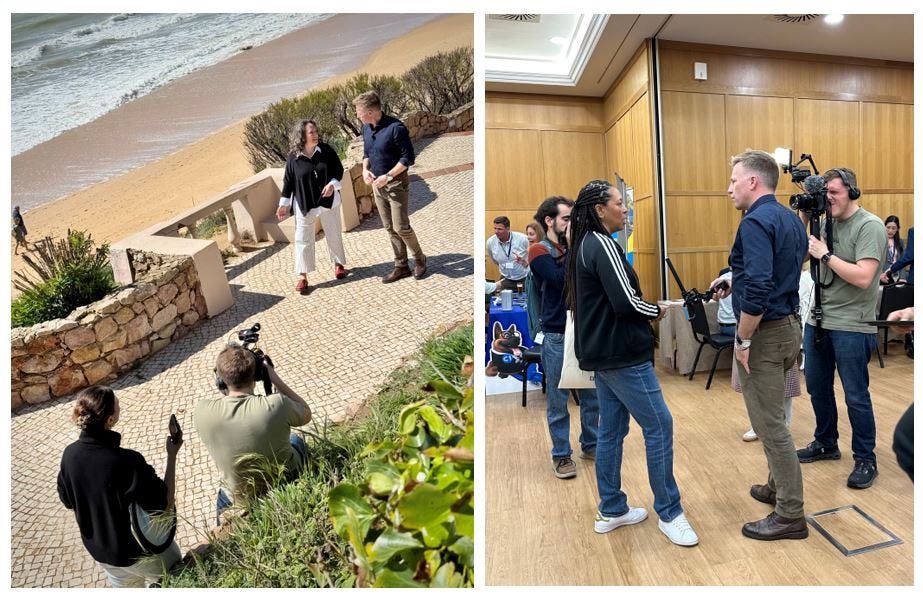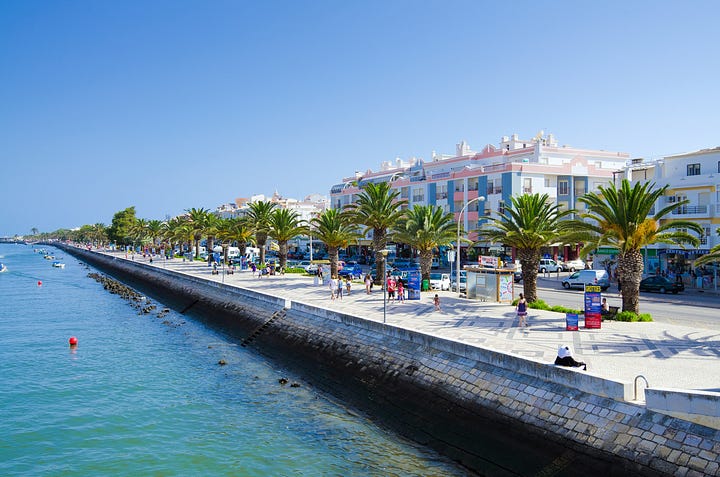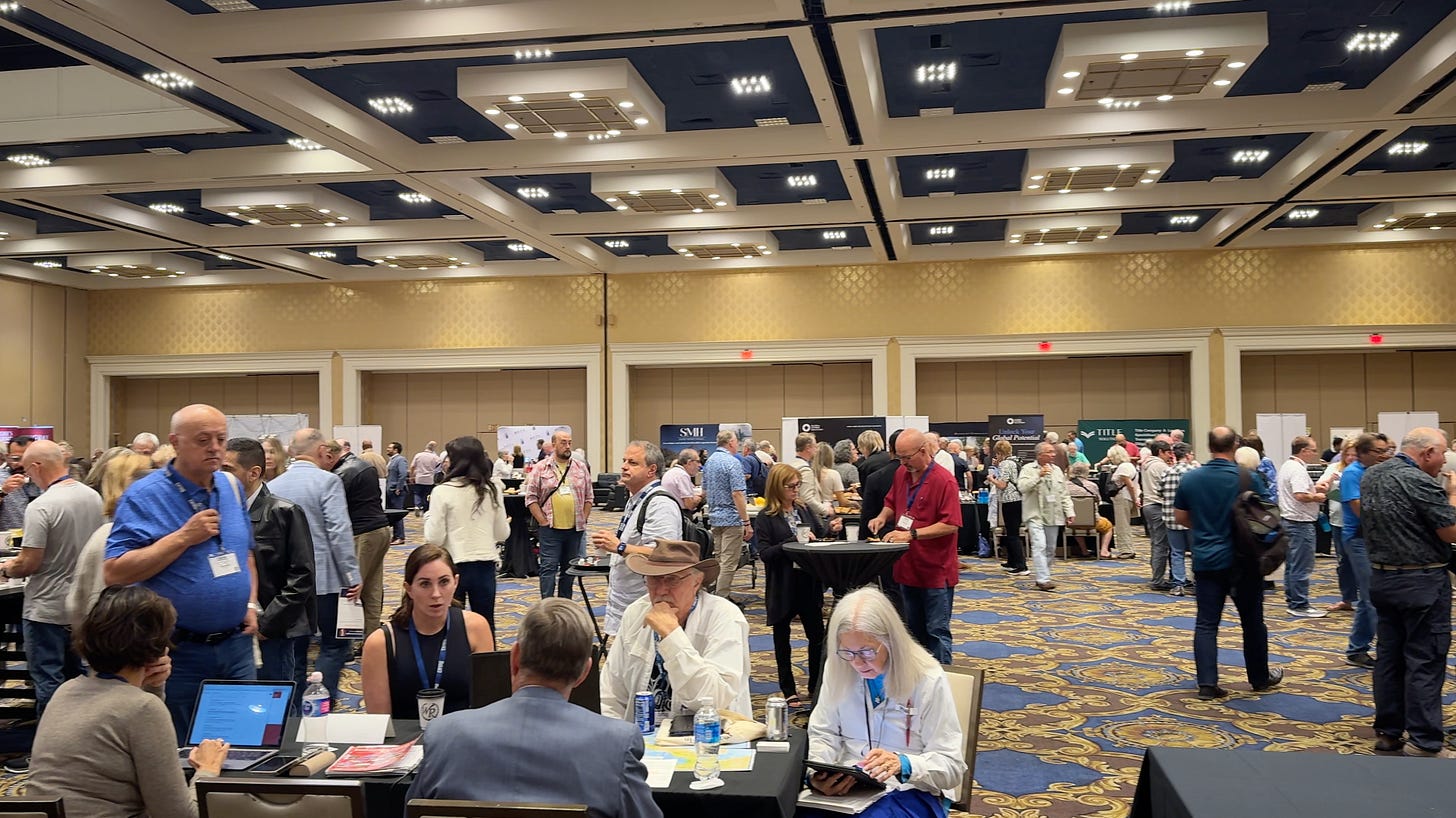How International Living Got Its Start — and Where We’re Headed Next
From two-color newsletters to global scouting trips, our mission is the same: uncover the opportunities the mainstream misses.
1979: International Living was two-color, printed, folded, slid into an envelope, stamped, and mailed each month to subscribers.
About 18 years ago, we put a cover on that volume and started calling it a magazine. Today, it lands in your inbox in digital form, and now here on Substack, you’re getting our boots-on-the-ground dispatches, too.
Format aside, International Living has always been a newsletter at heart, just as it was when Bill Bonner started it in Baltimore nearly 50 years ago.
Like all good newsletters, it was built on a contrarian idea: there’s a lot about the world you’ll never see in the mainstream press. There, stories are told to fit a narrative. We’ve always been about telling the real stories, the ones other people miss.
We’ve put boots on the ground to find overlooked places to live well, invest early, and travel smart — places nobody talked about yet. And we still do.
As Bill says:
“The newsletter industry, by its nature, is quirky… often shocking. It offers ALTERNATIVE views, most of which are about the future. Every recommendation, every analysis, every newsletter editor tries to look ahead to take advantage of it… or protect himself from it.”
We’ve been early again and again

In 1982, we recommended readers go to the Algarve in Portugal, when you could buy a condo for between $36,000 and $60,000... and a full meal, before wine, cost just $2 or $3 a person. These days—though there remain pockets on the Algarve where you can still find relatively good value and where property prices remain poised to go up still—you’d be hard-pressed to secure anything nice for under $150,000.
In 1997, we wrote about a little quarter-acre island in Lake Nicaragua—a 10-minute boat ride from the restaurants and shops in colonial Granada—on sale for $16,000. Today, one of these isletas lists for $380,000.
In 2000, we recommended Malta where, we reported: “the island’s most famous visitor was St. Paul the Apostle, who was shipwrecked here in A.D. 60.” At the time—and still today—it’s a lovely place to escape winter. But back then, you could rent a furnished apartment long-term from $200 a month or a house from $500. Today, you’d pay about six times that.


That same year, we watched as Ecuador dollarized its economy and, while the mainstream was reporting on the large disproportion of wealth in Latin America... we saw a window of opportunity: growth potential for the middle class. Ecuador, we argued, was poised to come into its own...
We wrote:
“As more people are able to live anywhere they choose, they will flock to the sun... and when they reach Florida and find prices are high and conditions are crowded... they will look for cheaper alternatives, like Ecuador.”
And that’s exactly what happened. By 2008, when the bottom fell out of the US housing market, ravaging people’s retirement plans... Ecuador was a destination of choice where, we reported, “We met a couple who rent a three-bedroom apartment in the heart of the village... with a large garden for their dogs. For this, they pay $150 a month. Neither of them likes to cook, so for $10 a day total they eat out just about every meal. They pay a local woman $10 a day to clean the apartment. Cotacachi is small, so they don’t need a car. Together, we tallied their monthly expenses. For no more than $600 per month, they live enviously well.”
That’s why what we do still matters

We aim, still today, to open your eyes early to places—and to opportunities—you won’t learn about anywhere else.
Just this month, we point you to Northern Portugal—an area virtually unknown to the tens of millions of tourists who flock to that country each year—where you can secure a 2,700-square-foot fixer-upper in Caminha for around $182,000.
And we recommend Mendoza, Argentina—now, in the wake of that country’s economic reforms—a sophisticated wine capital where you can “buy a renovated two-bedroom apartment for $139,000, rent a furnished place for $450 a month, or enjoy a world-class steak dinner for $6.”
We aim to get you to places early, before they’re old news, prices are on the rise, and there’s a Starbucks under construction.
No question, the idea of living a more international life has inched into the mainstream—the internet brought the outside world so much closer.
In some ways, that’s been great. Going abroad used to require so much more gumption—you remember those flimsy airmail envelopes and how expensive it was to make a long-distance call from a pay phone. When you left, you really left...
By contrast, today, you can sit on a beach in Belize and FaceTime your grandson to help him with his homework—and do it free on wifi.
Forty-six years ago, when International Living first hit the streets, retiring overseas, investing in property abroad, traveling to places where tour companies didn’t provide group excursions—these were radical notions.
Today, you can dial up a YouTube video from nearly anywhere and get a sense for what the place is like.
But there is a downside to all this connectivity: Any Tom, Dick, or Harry with a social media account and a few months abroad can hang out a shingle and purport to provide you good advice.
There is A LOT of questionable, incomplete, and downright incorrect information and guidance out there these days. It can cost you in time, money, and frustration...
And it’s why I believe that what we do for you here at International Living is more important—and more valuable—than ever.
We’ve been on this beat for nearly half a century. And we spend hundreds of thousands of dollars a year to ensure our team around the world is plugged in to what’s happening and constantly out scouting for opportunities.
We know where the pitfalls are—and, too, where to steer you for safe shortcuts that can get you to where you want to be efficiently and with confidence.
We have relationships with experts all around the world—relationships we’ve fostered over all these years, with folks who’ve helped thousands of IL members. So you can be confident that the experts we’re connecting you to and the guidance we’re giving you is sound and complete.
Meet Us in Person, Too
The stories you read here on Substack are just a taste because we believe you should see the world as it really is, good news and all. This channel gives you short dispatches, personal insights, and authentic glimpses of life abroad from our network on the ground, and if you want to see how it all comes together, with the people, places, and experts who make living overseas easier and better, join us at our Ultimate Go Overseas Bootcamp, where we gather our correspondents, legal experts, and real estate scouts — the folks who help you navigate the entire process.
Check out the details and save your spot here. We’d love to welcome you.
— Jennifer Stevens, IL Executive Editor
Editor’s Note: Or take the next step and become an International Living magazine subscriber — you’ll get first look at our biggest ideas, deep-dive explorations, and honest stories from expats already living your dream.



